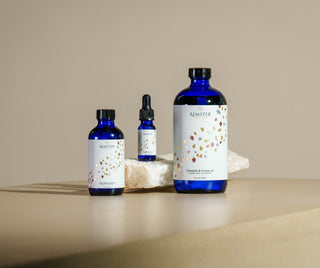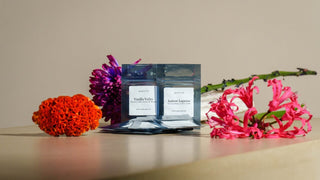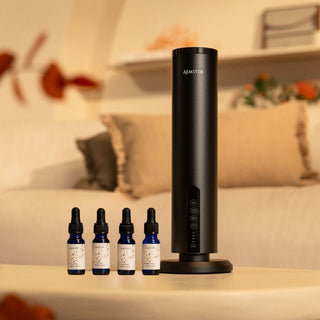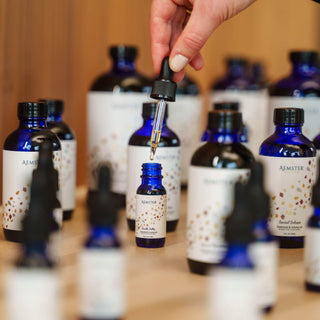Glossary
CONCEPTS AND GLOSSARY
Acacia. American ornamental tree with white racemes
Field bindweed. Climbing plant with red striped bellflowers.
Aldehyde. Aldehyde is one of the many chemical terms for certain odorants.
Aloe. Lily-like plant.
Autodidact. Who has formed himself by his own study,
Baccharis. Cross bush; tree or shrub with umbelliferous white or yellow flowers.
Balsam. Fragrant ointment.
Embalming. The actions and movements of a male animal compete for the favor of a female.
Benzoin. Odorous resin.
Bergamot. Pear-shaped lemon from France and Italy.
Bergamot oil is extracted from the peel.
Boudoir. Ladies' room.
Carob fruit. The carob is a plant. The leaves of the plant have an astringent effect and the flowers seem to smell of semen.
Cassia. From the leaves and the bark of the "Cinnamomum cassia" an oil was prepared which smelled of cinnamon.
Cedar. High coniferous tree.
Chaperone. Companion.
Concubine. Women with whom a man lives without marriage.
Preserve. To preserve means to make tenable (for a certain period) and has nothing to do with smell.
Coriander. Spice is a ground seed of an umbelliferous plant (strong smell).
Courtesan. A woman of light morals (who lives in distinguished circles).
Cyclamal. Fragrance based on (violet) violets.
Cypress. Southern European conifer.
Distillation. Distillation is the process of extracting essential oils from plants or parts of plants using water or water vapor (e.g. lavender oil, rose oil, etc.).
Dudaim. Alruin.
Eau de Carmes. Eau de Carmes is not scented water, but a kind of melissa spirit.
Eau de Cologne. Eau de Cologne is originally the French term for Kölnisch Wasser. It is now also used as a general term for water with a specific scent.
Eau de lavande. Eau de lavande is the French name for lavender water (and alcohol solution of a lavender composition).
Eau de parfum. Eau de parfum is the name for water with a specific strength (more powerful than eau de toilette).
Eau de la Reine (Hungary). Eau de la Reine is the predecessor of Kölnisch Wasser (scented water based on rosemary, used by the Hungarian queen).
Eau de toilette. Eau de toilette is the name given to water with a specific strength (more powerful than eau de Cologne).
Enfleurage. Enfleurage is a process for extracting natural fragrances, e.g. jasmine or tuberose (autumn hyacinth), using animal fat to extract the fragrance from the blossoms. This process is now only very rarely used in the South of France.
Essence. Essence is the French name for essential oils (e.g. essence de lavande = lavender oil).
Ethereal. Ethereal is the name used for volatile oils in connection with plant-based fragrances (in contrast to fatty oils, such as olive oil, which are not volatile).
Essential oil. Essential oil is the aromatic substance extracted by distillation from certain parts of a plant (e.g. lavender oil, rose oil, etc.). Citrus oils (lemon oil, orange oil, etc.) obtained by squeezing the peel are also generally classified as essential oils.
In general, citrus oils (lemon oil, orange oil, etc.) obtained by squeezing the peel are also regarded as essential oils.
Extract. Extract, obtained by evaporating a solution in water, alcohol, or ether from any (organic) substance. A distinction is made between liquid, thin, dry, and solid extracts.
Extraction. Extraction is the process by which extracts are obtained from certain parts of a plant. A volatile solvent such as alcohol is often used.
Pheromone. Is the odourant with which similar animals communicate. The communication in which scents play an important role is called chemo-communication (as in ants, butterflies, and flies).
Fête. Celebrate.
Fixator (fixative). Fixatives are substances that ensure that the scent of perfume lasts a long time, i.e. that can retain the scent of another odourant for a longer period. These are often civet or musk, but some botanical extracts can also be used for this purpose.
Gardenia. Ornamental plants cultivated in greenhouses.
Gerianol. Rose oil-based fragrance found in lily of the valley.
Grein. Medicinal weight: ‡ 65 mg.
Guirlande. Garland of flowers.
Resin. Sticky moisture of coniferous trees.
Helenium. Plant related to sunflowers.
Heliotrope. Pleasing purple flower.
Henna. Oriental plant which produces reddish dye.
Staghorn. Plant.
Hetaire. Highly developed courtesan in Ancient Greece.
Houri. According to the Koran, a virgin in paradise who remains young forever.
Hydroxycitronellal. Fragrance agent based on citrus oil.
Impregnation. Impregnation is in connection with fragrance: the impregnation of certain substances with perfume.
Indol. Type of alcohol.
Integrating. To make it into a whole.
Calamus. Aquatic plant with the aromatic rhizome.
Cardamom. Seed of ginger plant.
Crimson. Crimson.
Kohl. Dark eye powder to accentuate the eyes.
Lavender. Fragrant garden wax.
Privet. Shrub with white flowers.
Tanning agent. Substance used in making leather from hides.
Lupin. Butterfly-flowered plant with fragrant flower clusters.
Maceration. A term for extract process.
Marjoram. Lipflower plants with red or white flowers and leaves are used as a seasoning.
Mastic. Precious resinous plant derived from the shrubby tree Pisticia lentiscus.
Melissa. Southern European plant with lemon-scented white flowers.
Mint. Mentha; an aromatic herb from which mentha oil is extracted.
Mouches. Small decorative plasters of dark taffeta with which ladies (and gentlemen) in the 18th century decorated their skin.
Myrrhe. The gum-like odor of a plant.
Narcotic. Intoxicating.
Neroli. The essential oil is extracted from the flowers of the orange blossom (Citrus aurantium).
Oleander. Green ornamental shrub.
Undulate. Make hair waves.
Perfume. Perfume is scented water with the highest concentration of fragrance (so it is stronger and lasts longer than Eau de parfum).
Patchouli. Small shrub from the far east that produces a volatile, fragrant oil.
Pigment. Colouring agent in the skin.
Allspice. Tropical tree, Pimenta dioica; the berries are used as a spice.
Pomander (pomme d'arbre). Scented ball of amber, used to be worn on a belt or in the hand; also used to ward off bad diseases.
Pomade. Toilet salve.
Potpourri. A mixture of scented flower petals, spices, and herbs.
Preserve. Protect from.
Proposition. Announcement.
Proteins. Proteins.
Retort. Coke bottle.
Red ochre. Clay-colored by iron oxide.
Rattan. Sort of ornamental palm.
Satyrion. Orchid scent.
Serpolet. Wild thijim,
Souak. Bark from the walnut tree.
Storax, (Odorous brownish-red resin, obtained by boiling the wood of the storax tree (Styrax officinalis).
Suffrage. Dried pistils of a kind of crocus, spice, and yellow dye.
Suffragettes. Proponents of women's suffrage (‡ 1900).
Thyme. Fragrant herb.
Tuberose. Tuberous plant, native to Mexico, with fragrant flowers.
Vetaldehyde. Vetaldehydes are a special group of aldehydes that, because of their characteristic odor, are often combined with floral and fantasy fragrances.
Vetiver. A tropical grass (Andrapogon muricatus).
Frankincense. Gum Arabic resin.
Ylang-ylang. Fragrance dust from the Cananga odorata tree.






